#Bengali Historical Article
Explore tagged Tumblr posts
Text
Banglar Jamidar O Rayater Katha by Kamal Chowdhury Bengali Book Pdf
Banglar Jamidar O Rayater Katha by Kamal Chowdhury Bengali Book Pdfebook name- ‘Banglar Jamidar O Rayater Katha’Written by- Kamal ChowdhuryBook genre- Historical Article BookFile format- PDFPDF Size- 59MbPages- 626Quality- Good, without any watermark The emergence of the zamindari system in this Bangadesh was not God’s blessing. The foreign English rulers in a complex process subjugated the…

View On WordPress
0 notes
Text

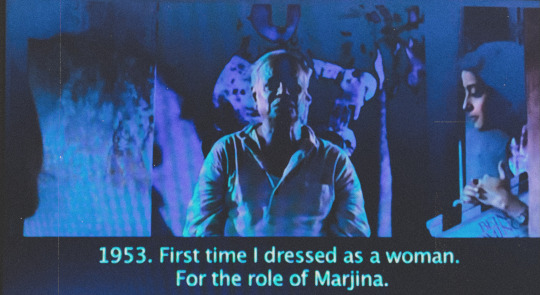
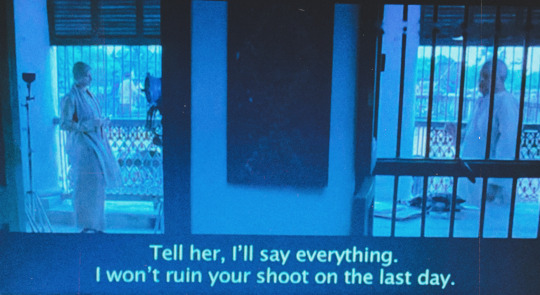
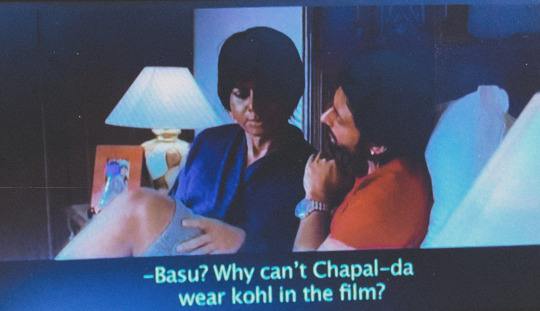
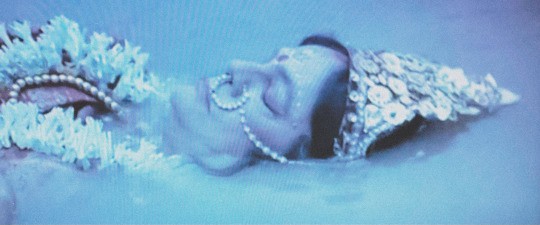

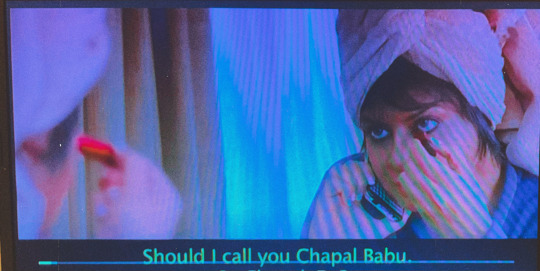
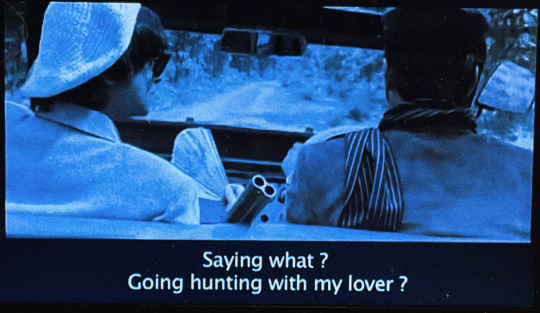


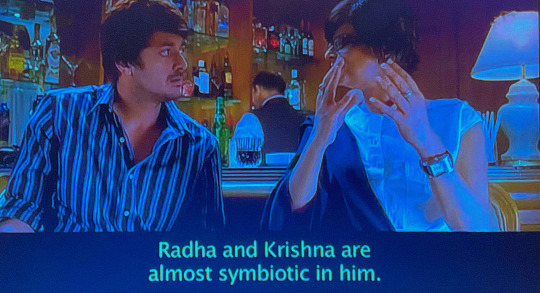
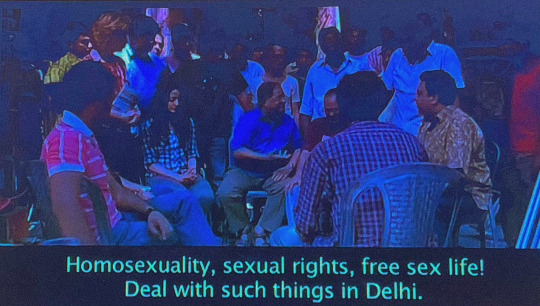
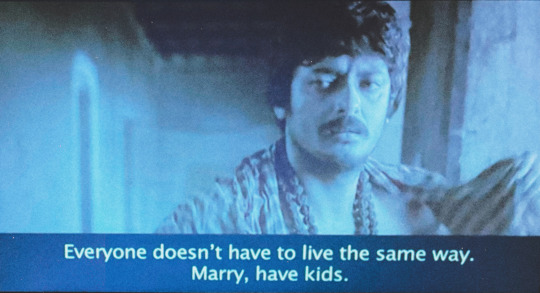
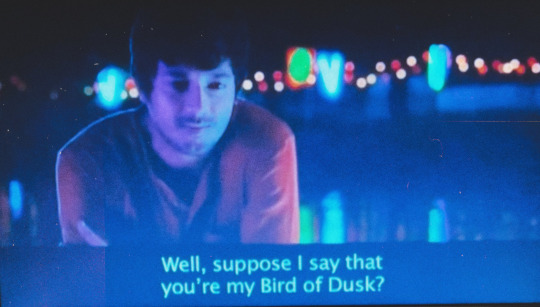

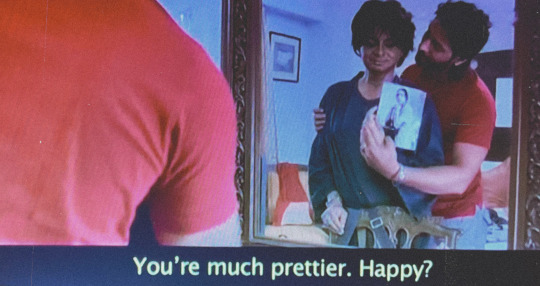
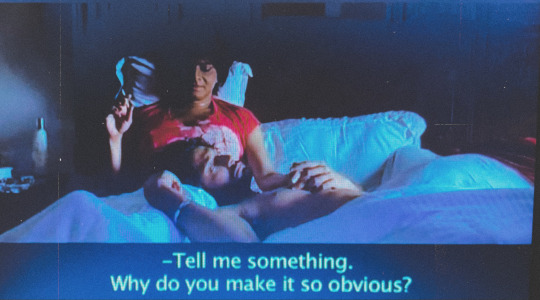
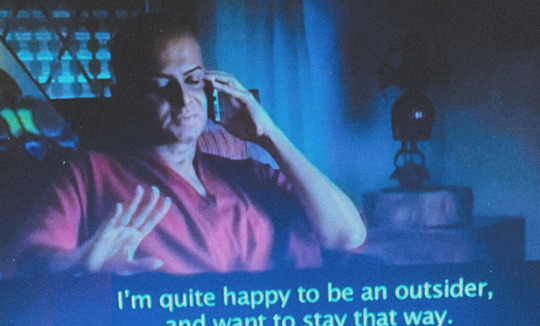


Arekti Premer Golpo (2010)/// Rituporno Ghosh
As a brown skinned queer girl, born in a country where identifying as *not straight* will get you to jail, I really didn’t have much icons to look up to growing up. The activists in the only formal LGBTQ organisation in our country were all killed off in 2013 (a hushed topic no one knows), so it’s scary as hell. Classmates calling me *hijra* because I liked girls along with boys. Frenemies sending me advice articles on *how not to be gay*. Juniors laughing at my *gender identity* and pronouns. I’ve had it all.
My mom always liked Rituporno Ghosh, saying his films equate to art, but would never show me who he was. Why? My young self wandered off and researched him up a bit. I was shocked to find an androgynous role model, a person who shared the same skin tone as me. It might sound silly today, but it surely meant a lot to the 13 year old fuddled up about her identity in the world.
Years have passed. I’m comfortable in my own skin. I’ve learnt to cut off remarks that do not matter. Ex boyfriend texted that I *looked gay* in a certain Instagram post, I replied *omg thanks <3*. Pansexuality has become such a deep part of me today that it doesn’t feel different. I’m the same human, ok?
I decided to watch up Rituporno’s most iconic film today. It is not a very *talked about film* in the Bengali industry.
Rituporno introduces melancholy as the main theme of the entire story. A gay man wanting to hide behind the story of the film he’s making. Being in love with someone he can’t have forever. As “Basu” describes in a shot, they’re lovers on the run.
Drawing from historic references and *Jatra*, he also explores the androgyny in the Bengali traditions. It magnifies the aesthetic appeal of the film even more. Lovely lovely camera work.
One of the main successes of the themes of “Arekti Premer Golpo”, in my opinion, is that it is close to reality than most other queer stories. The other upbeat netflix series stuff show a very utopian world where LGBTQ lovers live in an accepting world, almost isolated to only themselves. But Rituporno illustrates complex relationship dynamics in his films, leaving the audience to wonder the real chemistry between them (I still need to research).
It’s brain food, it’s thoughtful. I love it.
absolutely 9/10.
@jukti-torko-golpo @amar-hiyar-majhe @shubhadeep385 @il-ragazzo @gorgpearllatte @augustineprime @dewaniiiii @faewong
#Films#lgbt#lgbt pride#queer#queer community#queer films#light academia#dark academia#desi girl#desiblr#girlblogging#gaslight gatekeep girlblog#this is a girlblog#Rituporno ghosh#bengali#bengali films#movies#cinema#movie review#bengaliblr#indian tumblr#indian#west bengal#bangladesh#queer rights#lgbt rights#lgbtqia rights
13 notes
·
View notes
Text
Ditipriya Roy, a name synonymous with grace and talent, has become a household name in the Bengali television industry. Known for her versatility and captivating performances, Ditipriya has carved out a niche for herself in the hearts of millions. This article explores her journey, achievements, and the impact she has made on the entertainment industry.
Early Life and Background
Ditipriya Roy was born on August 10, 2002, in Kolkata, West Bengal. From a young age, she exhibited a natural flair for the performing arts. Encouraged by her family, Ditipriya participated in numerous school plays and cultural events, where her talent was evident. Her early exposure to the arts laid the foundation for what would become a successful career in acting.
Entry into the Entertainment Industry
Ditipriya’s journey into the entertainment industry began at a tender age. Her first significant role came in the form of child artist roles in Bengali television serials. However, her big break came with the historical drama "Rani Rashmoni," where she played the titular role of Rani Rashmoni. Her portrayal of the 19th-century Bengali social reformer was both powerful and nuanced, earning her critical acclaim and a massive fan following.
Breakthrough Role: Rani Rashmoni
"Rani Rashmoni" aired on Zee Bangla and quickly became one of the most-watched shows on Bengali television. Ditipriya’s performance was lauded for its depth and authenticity, capturing the essence of the historical figure she portrayed. Her ability to convey a wide range of emotions and her dedication to the role set her apart from her contemporaries. This role not only established Ditipriya as a talented actress but also as a beloved figure in Bengali households.
Acting Style and Versatility
Ditipriya Roy is known for her ability to immerse herself in her characters fully. Her acting style is characterized by a natural and effortless delivery, which brings authenticity to her roles. Whether she is playing a historical figure, a modern-day character, or a complex persona, Ditipriya’s performances are always compelling and believable. Her versatility allows her to seamlessly transition between different genres and character types, showcasing her wide range as an actress.
Notable Works and Achievements
Apart from "Rani Rashmoni," Ditipriya has appeared in several other television serials and films. Some of her notable works include:
"Kahaani": Ditipriya played a significant role in this critically acclaimed film, further demonstrating her versatility and acting prowess.
"Praktan": Her performance in this popular film was highly appreciated, adding another feather to her cap.
"Feluda Pherot": Ditipriya appeared in this web series based on the iconic detective Feluda, showcasing her ability to adapt to modern storytelling formats.
Her achievements include numerous awards and accolades for her performances, solidifying her status as one of the leading actresses in Bengali entertainment.
Impact on the Industry
Ditipriya Roy has had a profound impact on the Bengali television and film industry. Her portrayal of strong, independent characters has resonated with audiences, inspiring many young viewers. She has brought historical and cultural figures to life, educating and entertaining in equal measure. Her success has also opened doors for other young talents, proving that dedication and hard work can lead to significant achievements.
Future Prospects
With her talent and drive, Ditipriya Roy’s future in the entertainment industry looks exceptionally bright. She continues to explore diverse roles and projects, expanding her repertoire and challenging herself as an actress. Her upcoming projects are eagerly anticipated by fans and critics alike, who are keen to see what new dimensions she will bring to her performances.
Conclusion
Ditipriya Roy is undoubtedly one of the brightest stars in the Bengali entertainment industry. Her journey from a young enthusiast to a celebrated actress is a testament to her talent, hard work, and passion for the craft. As she continues to captivate audiences with her performances, Ditipriya Roy is set to leave an indelible mark on the world of entertainment, inspiring future generations of actors and storytellers.
2 notes
·
View notes
Text
Bengali Jeweller in Australia: A Perfect Blend of Tradition and Modern Craftsmanship
Australia is a country that is known for its diverse cultures, and its vibrant Indian community is no exception. Among the many cultural expressions, Bengali jewellers in Australia have carved a unique place for themselves. Bringing their rich cultural heritage and exquisite craftsmanship, Bengali jewellers offer beautiful jewelry that combines traditional designs with modern techniques. If you are looking to celebrate your roots or simply add a touch of elegance to your collection, Bengali jewellers in Australia provide the perfect fusion of heritage and contemporary style.
In this article, we will explore the world of Bengali jewellers in Australia, highlighting the significance of Bengali craftsmanship, the types of jewelry they create, and the top places to shop for Bengali jewelry. One prominent name in this space is Jewels of Punjab in Australia, a brand that stands out for its remarkable jewelry offerings and commitment to quality.
The Rich Heritage of Bengali Jewelry
Bengali jewelry is deeply influenced by the rich cultural and historical heritage of Bengal. Known for intricate designs and fine craftsmanship, Bengali jewellers in Australia bring traditional Bengali motifs to life. These pieces often incorporate intricate filigree work, floral patterns, and the use of precious stones like diamonds, emeralds, and rubies. The pieces crafted by Bengali jewellers in Australia often reflect themes of nature, love, and spirituality.
What sets Bengali jewelry apart is its versatility. It can range from the heavy, ornate pieces worn during festivals like Durga Puja or weddings, to more delicate and modern designs for daily wear. Bengali jewellers in Australia incorporate both old-world traditions and contemporary influences, allowing them to cater to the diverse tastes of the Australian market.
Popular Types of Jewelry by Bengali Jewellers in Australia
Gold Jewelry Bengali culture places great emphasis on gold, and Bengali jewellers in Australia are well-known for their finely crafted gold jewelry. Pieces such as gold necklaces, bangles, and earrings are intricately designed to carry forward the cultural symbolism of Bengal. These designs are often passed down through generations, making them timeless treasures.
Diamond and Gemstone Jewelry Many Bengali jewellers in Australia specialize in diamond and gemstone jewelry. Combining both traditional and contemporary designs, they create breathtaking necklaces, rings, and earrings that are perfect for weddings, engagements, or other special occasions. These pieces not only highlight the brilliance of diamonds but also make use of colorful gemstones like emeralds, sapphires, and rubies.
Bridal Jewelry Bengali bridal jewelry is renowned for its grandeur. Traditionally, a Bengali bride wears a complete set of heavy jewelry, including the “nath” (nose ring), “bala” (bangles), and “mukut” (headpiece). Bengali jewellers in Australia bring these bridal traditions to life, offering brides-to-be exquisite options that perfectly blend modern style with cultural symbolism.
Traditional Bengali Wedding Sets A traditional Bengali wedding set is complete with stunning jewelry that signifies love, commitment, and tradition. Bengali jewellers in Australia craft these sets with incredible attention to detail, using precious metals and stones. Whether you are seeking a classic bridal set or something more modern, Bengali jewellers in Australia have the expertise to meet your needs.
Jewels of Punjab in Australia: A Leader in Bengali Jewelry
One of the standout names when it comes to finding Bengali jewellers in Australia is Jewels of Punjab in Australia. This trusted brand has gained immense popularity for its high-quality craftsmanship and diverse range of jewelry offerings. With a deep understanding of traditional Bengali designs, Jewels of Punjab in Australia has successfully combined these timeless motifs with modern techniques, creating stunning pieces that are cherished by customers worldwide.
Jewels of Punjab in Australia is known for its extensive collection of gold, diamond, and gemstone jewelry. Whether you're looking for a simple pair of earrings or a complete bridal set, Jewels of Punjab in Australia offers a variety of styles that cater to different tastes and preferences. Their commitment to quality and customer satisfaction makes them a standout among Bengali jewellers in Australia.
Why Choose Bengali Jewellers in Australia?
Expert Craftsmanship Bengali jewellers in Australia are known for their skillful craftsmanship. They pay attention to every detail, ensuring that each piece is not only beautiful but also durable. From handcrafting intricate designs to using high-quality materials, the craftsmanship is second to none.
Cultural Significance Jewelry plays an important role in Bengali culture, symbolizing various life stages and celebrations. Choosing a Bengali jeweller in Australia means that you are investing in a piece that carries cultural significance, whether it's for a wedding, festival, or a personal milestone.
Personalized Services Many Bengali jewellers in Australia offer customization options, allowing customers to create unique pieces that suit their personal style. Whether you're designing your engagement ring or creating a one-of-a-kind necklace, these jewellers work closely with clients to bring their visions to life.
Diverse Selection The beauty of shopping with Bengali jewellers in Australia is the vast selection of jewelry they offer. From traditional Bengali designs to contemporary pieces, they have something for everyone. Whether you want something elaborate or minimalist, Bengali jewellers in Australia ensure that you’ll find the perfect piece.
Conclusion
Bengali jewellers in Australia continue to make a mark in the world of fine jewelry by blending traditional craftsmanship with modern sensibilities. These jewellers offer a wide variety of designs, from intricate gold jewelry to stunning diamond and gemstone pieces. For those looking for exquisite pieces that celebrate Bengali culture, Jewels of Punjab in Australia stands out as a leader in the field, offering both timeless and contemporary styles. Whether you’re looking for a bridal set, a special gift, or an everyday accessory, Bengali jewellers in Australia provide unmatched elegance and cultural depth in every piece.
#Indian Jeweller in Australia#Indian Jewellers in Australia#Indian Jewellery in Australia#Punjabi Jeweller in Australia#Punjabi Jewellers in Australia#Punjabi Jewellery in Australia#Tamil Jeweller in Australia#Tamil Jewellers in Australia#Tamil Jewellery in Australia#South Indian Jeweller in Australia#South Indian Jewellers in Australia#South Indian Jewellery in Australia#Nepali Jeweller in Australia#Nepali Jewellers in Australia#Nepali Jewellery in Australia#Pakistan Jeweller in Australia#Pakistan Jewellers in Australia#Pakistan Jewellery in Australia#Pakistani Jeweller in Australia#Pakistani Jewellers in Australia#Pakistani Jewellery in Australia#Bengali Jeweller in Australia#Bengali Jewellers in Australia#Bengali Jewellery in Australia#Bangladesh Jeweller in Australia#Bangladesh Jewellers in Australia#Bangladesh Jewellery in Australia#Indian Jeweller in Brisbane#Indian Jewellers in Brisbane#Indian Jewellery in Brisbane
0 notes
Text
Why is Kolkata Emerging as a Hub for Hotel Management Education

Kolkata, the cultural capital of India, has always been a city of opportunities. In recent years, it has gained recognition as a prominent hub for hotel management education. This transformation is no coincidence; it’s driven by a combination of historical significance, strategic location, and an ever-growing demand for skilled professionals in the hospitality industry. In this article, we explore why Kolkata is becoming a go-to destination for aspiring hospitality professionals.
A Rich Cultural and Historical Backdrop
Kolkata’s rich history and vibrant culture make it an ideal place to learn about hospitality. The city is home to heritage hotels, historic landmarks, and a thriving tourism industry. For students pursuing a hospitality management course in Kolkata, this cultural diversity offers a unique learning environment.
Exposure to Diverse Clientele:
The city attracts tourists and business travelers from across the globe.
Students gain real-world experience in catering to diverse needs.
Blend of Tradition and Modernity:
From traditional Bengali cuisine to international culinary trends, students experience a wide spectrum of hospitality practices.
Strategic Location and Economic Growth
Kolkata’s strategic location in eastern India makes it a gateway to Southeast Asia. The city’s economic growth has also spurred the development of luxury hotels, resorts, and restaurants. This growth translates into abundant opportunities for students enrolled in tourism management courses in Kolkata.
Key Benefits of Kolkata’s Location
Access to Emerging Markets:
Proximity to countries like Bangladesh, Bhutan, and Nepal opens up international career prospects.
Growing Hospitality Industry:
The rise in international tourism has fueled demand for skilled professionals.
Institutions offering a hospitality management diploma in Kolkata are strategically positioned to cater to this demand.
World-Class Educational Institutions
Kolkata boasts several top-tier institutions specializing in hotel management. These institutions combine theoretical knowledge with practical training, ensuring that students are industry-ready.
Features of Leading Institutions
Comprehensive Curriculum:
Programs like the hospitality management course in Kolkata cover all aspects of hospitality, from operations to management.
Experienced Faculty:
Renowned chefs and hospitality professionals mentor students.
State-of-the-Art Facilities:
Modern kitchens, mock hotel rooms, and advanced training tools enhance learning.
Strong Industry Connections:
Collaborations with leading hotels and resorts ensure valuable internships and placements.
Focus on Practical Training and Internships
A hallmark of hotel management education in Kolkata is its emphasis on hands-on experience. Students pursuing a hospitality management diploma in Kolkata benefit from internships at top hospitality establishments.
Importance of Practical Training
Real-World Experience:
Internships at five-star hotels and resorts prepare students for industry challenges.
Skill Development:
Exposure to different departments, including housekeeping, food and beverage, and front office operations.
Networking Opportunities:
Building connections with industry leaders during internships.
Affordable Education with High ROI
Compared to other metro cities in India, Kolkata offers quality education at a relatively lower cost. This affordability, combined with the city’s growing job market, ensures a high return on investment for students.
Advantages of Studying in Kolkata
Lower Tuition Fees:
Programs like tourism management courses in Kolkata are cost-effective.
Affordable Living Costs:
Accommodation, food, and transport are more budget-friendly compared to cities like Mumbai and Delhi.
Lucrative Career Opportunities:
Graduates secure placements in top hotels, restaurants, and travel companies, both in India and abroad.
Growing Demand for Skilled Professionals
The hospitality and tourism sectors are among the fastest-growing industries globally. Kolkata’s institutions are addressing this demand by producing highly skilled professionals.
Career Opportunities
Hotel Management:
Graduates from a hospitality management course in Kolkata find roles in top hotel chains like Marriott, Taj, and ITC.
Tourism Management:
The demand for professionals with a background in tourism management courses in Kolkata is on the rise.
Event Planning:
A growing niche offering opportunities in corporate events, weddings, and cultural festivals.
International Exposure and Opportunities
Kolkata’s institutions offer global exposure through exchange programs, international internships, and collaborations with foreign universities.
Benefits of International Exposure
Global Standards:
Students learn international hospitality practices.
Diverse Work Environment:
Working with people from different cultural backgrounds enhances adaptability and communication skills.
Global Placements:
Institutions offering a hospitality management diploma in Kolkata often have tie-ups with international recruiters.
Conclusion
Kolkata is rapidly emerging as a hub for hotel management education due to its cultural richness, strategic location, and growing hospitality industry. The city’s top institutions, offering programs like the hospitality management course in Kolkata and tourism management courses in Kolkata, provide a perfect blend of theoretical knowledge and practical experience. With affordable education, strong industry connections, and abundant career opportunities, Kolkata is undoubtedly a top choice for aspiring hospitality professionals.
#hospitality management course in kolkata#tourism management courses in kolkata#hospitality management diploma in kolkata
0 notes
Text
"The Global Rise of DesiCinema: How Indian Films are Conquering the World"

Indian cinema, also known as DesiCinema, has long been a force to reckon with, captivating millions of viewers both in India and abroad. In recent years, however, DesiCinema has exploded onto the global stage, earning accolades and achieving unprecedented success in international markets. From awards at prestigious film festivals to record-breaking box office numbers worldwide, the influence of Indian cinema has reached new heights. But what is behind this growing global recognition, and why are international audiences flocking to desicinema in droves?
A New Era of Global Storytelling
DesiCinema has historically been known for its larger-than-life spectacle, songs, and dances, but the new wave of Indian filmmakers is pushing the boundaries of storytelling. Directors are increasingly creating content that resonates not only with Indian audiences but also with global viewers. The success of films like Gully Boy (2019), which was inspired by the Indian rap scene, and RRR (2022), which broke records worldwide, signals a shift in Indian cinema's approach to narrative, style, and themes.
These films tackle universal themes—such as self-expression, rebellion, and friendship—that resonate across cultural boundaries. RRR’s success, in particular, is a testament to the power of DesiCinema to appeal to global audiences. The film's combination of jaw-dropping action, compelling storytelling, and emotional depth earned it widespread praise, not only in India but across the world, culminating in a win for Best Original Song at the 2023 Academy Awards.
Social Media & Streaming Platforms: Catalysts of Change
The rise of streaming platforms like Netflix, Amazon Prime, and Disney+ Hotstar has played a crucial role in making DesiCinema accessible to international audiences. These platforms offer a convenient way for non-Indian viewers to explore Indian cinema, often with subtitles in multiple languages. This accessibility has democratized Indian films and allowed viewers from all corners of the world to explore the diverse narratives of DesiCinema.
Films like The Lunchbox (2013) and Dangal (2016) have garnered massive global audiences through these platforms, showcasing India's rich culture and unique storytelling style. The availability of regional films from industries like Tamil, Telugu, Malayalam, and Bengali on international streaming services has opened up a whole new world of cinema that was previously inaccessible to non-Indian viewers.
Moreover, social media has played a pivotal role in spreading the word about DesiCinema. Hashtags like #Bollywood, #Tollywood, and #RRR have trended on Twitter, Instagram, and TikTok, creating viral moments and attracting global attention. The use of social media platforms to engage with fans directly has allowed Indian filmmakers to cultivate a global fanbase that is enthusiastic and vocal about their work.
The Appeal of DesiCinema: A Fusion of Tradition and Innovation
So why are global audiences falling in love with DesiCinema? One of the key reasons is its ability to blend traditional cultural elements with modern cinematic techniques. Indian films are renowned for their rich music, vibrant dance sequences, and colorful visuals, but they also tackle complex and relatable issues. Whether it’s the human struggles depicted in Barfi! (2012), the socio-political commentary in Article 15 (2019), or the celebration of identity in Dil Dhadakne Do (2015), DesiCinema finds a way to connect deeply with audiences.
Furthermore, Indian cinema’s unique form of storytelling—whether it’s through fantasy, action, drama, or romance—offers something distinct from Hollywood and other global film industries. Desi films have a way of immersing viewers in their worlds, blending emotion, spectacle, and culture in a way that feels fresh and exciting.
International Film Festivals and Recognition
The international recognition of DesiCinema has been marked by an increasing presence at prestigious film festivals around the world. Films like The Lunchbox, Court (2014), Masaan (2015), and Gully Boy have all made waves at major festivals such as Cannes, Toronto, and Berlin. Additionally, Indian filmmakers like Satyajit Ray, Anurag Kashyap, and Zoya Akhtar have earned critical acclaim for their work, helping put desicinemas on the global map.
This visibility has helped Indian cinema break through traditional cultural and language barriers, making it a respected part of the global film landscape. The Indian diaspora, which spans continents, has been instrumental in spreading the love for DesiCinema, but the appeal is no longer limited to them. Non-Indians are now discovering the joy of watching Indian films, and their global success is evidence of the growing influence of DesiCinema worldwide.
Conclusion: A Cinematic Revolution
DesiCinema is in the midst of a revolution. From the groundbreaking work of contemporary filmmakers to the global embrace of Indian stories, the future of Indian cinema is brighter than ever. As Indian filmmakers continue to experiment with new forms of storytelling and embrace global sensibilities, DesiCinema is poised to captivate audiences worldwide for years to come.
In a world where cinema is becoming increasingly globalized
0 notes
Text
[ad_1] East Bengal gearing up for Basundhara Kings (PC: East Bengal/X) East Bengal aims to get back to winning ways as they face Bangladesh’s Basundhara Kings in the AFC Challenge League 2024-25 group stage at Thimphu’s Changlimithang Stadium. In their tournament opener, the Red and Gold brigade had a chance to end a six-game losing streak from the Indian Super League (ISL). However, they could only manage a 2-2 draw against Paro FC, missing multiple opportunities to score. Meanwhile, Basundhara suffered a narrow 1-0 defeat to Lebanon’s Nejmeh SC. Both teams will push for a win, as a loss today could end their progression hopes. Following the draw with Paro FC, East Bengal coach Oscar Bruzon stressed the need to improve fitness and capitalise on scoring chances. Fans will be eager to see these changes in today’s match. This game will be special for Bruzon, as he previously coached Basundhara, where he won five league titles, three Bengali Federation Cups, and three Bengali Independence Cups. Leading East Bengal against familiar faces could work to his advantage. In the pre-match press conference, Bruzon stated: “We have to win at any cost. The players know that. Yes, the early match will give an idea to both teams.” Bruzon opted for a 4-5-1 formation against Paro FC, while Basundhara Kings’ coach Valeriu Tita, a former AFC Cup winning coach with Syria’s Al-Ahli SC in the 2009/10 season, went with a defensive 4-3-3 against Nejmeh SC. Tita’s experience in big tournaments could benefit his team as they adapt more going forward. For the Latest Sports News: Click Here East Bengal vs Paro FC, AFC Challenge Cup (PC: East Bengal/X) Basundhara has no major injury concerns, while East Bengal might miss Provat Lakra due to an injury from the last game. This will be the first face-off between the two teams. For Basundhara, Brazilian midfielder Miguel Ferreira will be key with his creativity and final-third connections; last season in the Bangladeshi Premier League, he scored nine goals and assisted five times in 14 games. On the East Bengal side, Greek forward Dimitrios Diamantakos, who scored a penalty in the last match, will look to be more clinical with his chances. Historically, Basundhara has done well against Indian clubs, with three wins, three draws, and only two losses in eight matches. Last season, they defeated Mohun Bagan at home and drew with them in India. Before this game, Tita acknowledged East Bengal as a strong team but expressed his squad’s readiness for the challenge. The match will likely feature East Bengal’s attack against Basundhara’s defence, with the Bangladeshi side aiming to counterattack. The high altitude could still be a factor, but East Bengal fans hope their players are now more acclimatised to the conditions. Also Read: East Bengal’s AFC Challenge League opener ends in 2-2 stalemate with Paro FC The post East Bengal on a mission against Oscar Bruzon’s old club, Basundhara Kings in AFC Challenge League appeared first on Sports News Portal | Latest Sports Articles | Revsports. [ad_2] Source link
0 notes
Text
[ad_1] East Bengal gearing up for Basundhara Kings (PC: East Bengal/X) East Bengal aims to get back to winning ways as they face Bangladesh’s Basundhara Kings in the AFC Challenge League 2024-25 group stage at Thimphu’s Changlimithang Stadium. In their tournament opener, the Red and Gold brigade had a chance to end a six-game losing streak from the Indian Super League (ISL). However, they could only manage a 2-2 draw against Paro FC, missing multiple opportunities to score. Meanwhile, Basundhara suffered a narrow 1-0 defeat to Lebanon’s Nejmeh SC. Both teams will push for a win, as a loss today could end their progression hopes. Following the draw with Paro FC, East Bengal coach Oscar Bruzon stressed the need to improve fitness and capitalise on scoring chances. Fans will be eager to see these changes in today’s match. This game will be special for Bruzon, as he previously coached Basundhara, where he won five league titles, three Bengali Federation Cups, and three Bengali Independence Cups. Leading East Bengal against familiar faces could work to his advantage. In the pre-match press conference, Bruzon stated: “We have to win at any cost. The players know that. Yes, the early match will give an idea to both teams.” Bruzon opted for a 4-5-1 formation against Paro FC, while Basundhara Kings’ coach Valeriu Tita, a former AFC Cup winning coach with Syria’s Al-Ahli SC in the 2009/10 season, went with a defensive 4-3-3 against Nejmeh SC. Tita’s experience in big tournaments could benefit his team as they adapt more going forward. For the Latest Sports News: Click Here East Bengal vs Paro FC, AFC Challenge Cup (PC: East Bengal/X) Basundhara has no major injury concerns, while East Bengal might miss Provat Lakra due to an injury from the last game. This will be the first face-off between the two teams. For Basundhara, Brazilian midfielder Miguel Ferreira will be key with his creativity and final-third connections; last season in the Bangladeshi Premier League, he scored nine goals and assisted five times in 14 games. On the East Bengal side, Greek forward Dimitrios Diamantakos, who scored a penalty in the last match, will look to be more clinical with his chances. Historically, Basundhara has done well against Indian clubs, with three wins, three draws, and only two losses in eight matches. Last season, they defeated Mohun Bagan at home and drew with them in India. Before this game, Tita acknowledged East Bengal as a strong team but expressed his squad’s readiness for the challenge. The match will likely feature East Bengal’s attack against Basundhara’s defence, with the Bangladeshi side aiming to counterattack. The high altitude could still be a factor, but East Bengal fans hope their players are now more acclimatised to the conditions. Also Read: East Bengal’s AFC Challenge League opener ends in 2-2 stalemate with Paro FC The post East Bengal on a mission against Oscar Bruzon’s old club, Basundhara Kings in AFC Challenge League appeared first on Sports News Portal | Latest Sports Articles | Revsports. [ad_2] Source link
0 notes
Text
Why is the Celebration of Durga Puja the Oldest Living Heritage of Bengal?
Durga Puja is a vibrant part of Bengali culture, rooted in ancient tradition and devotion. It began in the early 17th century and has evolved from private family ceremonies to public celebrations. Today, it is recognized by UNESCO as an Intangible Cultural Heritage of Humanity, symbolizing unity and togetherness in Bengali heritage.Durga Puja is not just a festival; it’s a vibrant tapestry of Bengali culture woven through centuries of tradition and devotion. Rooted in ancient texts, the portrayal of Goddess Durga in Bengal resonates with the rich iconography of historic sites like Aihole and Mahabalipuram, dating back to the 7th century. 📜
The first recorded Durga Puja took place in Nadia around 1606, thanks to the foresight of Maharaja Krishnachandra’s ancestor, Bhavananda. Fast forward to 1610, and the Savarna Chowdhury family in Barisha initiated a sacred tradition that continues today. As Kolkata blossomed into a hub of commerce, the elite embraced this age-old ritual to strengthen community ties and business networks. 🏙️💼
The transformation of Durga Puja from private family ceremonies to public celebrations marks a pivotal moment in its history. In 1761, a group of young men formed a committee after being barred from a family puja, giving birth to the public Barwari style. This spirit of inclusivity reached new heights in 1910 when freedom fighters rebranded the puja as 'Sarbajanin,' symbolizing unity and collective identity. 🇮🇳💪
Today, Kolkata's Durga Puja transcends mere celebration; it has become a universal festival recognized by UNESCO as an Intangible Cultural Heritage of Humanity. It embodies the essence of togetherness, artistic expression, and devotion, making it a gem of Bengali heritage. 🕊️🌟
Join us in celebrating this magnificent legacy! 🙌
Happy Durga Puja ❤️
For More News Articles on this Topic, don't forget to check out Newsepick: https://newsepick.com/
#DurgaPuja#BengalHeritage#CulturalCelebration#Sarbajanin#IntangibleHeritage#KolkataFestivals#GoddessDurga#CommunitySpirit#Tradition#UNESCO#BengaliCulture#FestivalOfLights#HeritageSite#FestivalsOfIndia#ArtAndCulture#Togetherness
1 note
·
View note
Text
Shiv Chalisa in Bengali: A Comprehensive Guide to the Devotional Hymn

The Shiv Chalisa, a revered devotional hymn dedicated to Lord Shiva, is an essential text for many devotees. Composed of 40 verses, this hymn extols the virtues, powers, and grace of Lord Shiva, providing followers with a means to connect spiritually with the divine. For Bengali-speaking devotees, the Shiv Chalisa in Bengali offers a culturally resonant way to engage in worship and devotion. This article delves into the significance of the Shiv Chalisa, its structure, benefits, and how to recite it effectively.
Understanding Shiv Chalisa
What is Shiv Chalisa?
Historical Significance of Shiv Chalisa
The Structure of Shiv Chalisa
Overview of the 40 Verses
Key Themes and Messages
Shiv Chalisa in Bengali
The Text of Shiv Chalisa in Bengali
Transliteration and Pronunciation Guide
Benefits of Chanting Shiv Chalisa
Spiritual Benefits: Peace and Protection
Psychological Benefits: Stress Relief and Clarity
Health Benefits: Enhancing Overall Well-Being
How to Chant Shiv Chalisa
Best Times for Recitation
Ideal Environment for Chanting
Recommended Rituals and Practices
Frequently Asked Questions (FAQs)
Q1: What is Shiv Chalisa? The Shiv Chalisa is a devotional hymn dedicated to Lord Shiva, consisting of 40 verses that praise His divine attributes, power, and grace. It is recited by devotees to seek blessings, protection, and spiritual growth.
Q2: What are the benefits of chanting Shiv Chalisa in Bengali? Chanting the Shiv Chalisa in Bengali offers several benefits, including spiritual peace, stress relief, clarity of mind, and a sense of protection. It helps devotees connect deeply with Lord Shiva, promoting inner tranquility and well-being.
Q3: Can I chant Shiv Chalisa at any time of the day? While Shiv Chalisa can be recited at any time, the most auspicious times are early in the morning (Brahma Muhurta) and during the evening hours. These times are ideal for spiritual practices as they promote focus and calmness.
Q4: Is it necessary to follow any rituals while chanting Shiv Chalisa? Although there are no strict rituals, it is recommended to maintain a clean and peaceful environment while chanting. Lighting a diya (lamp), offering flowers, and sitting in a quiet space can enhance the devotional experience.
Q5: Can anyone chant Shiv Chalisa, or is it limited to specific people? Yes, anyone can chant the Shiv Chalisa, regardless of age, gender, or background. It is a universal devotional practice, and all who approach it with faith and sincerity can benefit from its recitation.
Conclusion:
Chanting the Shiv Chalisa in Bengali is a meaningful way for devotees to connect with Lord Shiva. This powerful hymn not only fosters spiritual growth but also provides psychological and health benefits. By understanding the verses and incorporating them into daily practice, individuals can deepen their devotion and experience a profound sense of peace and protection. The Shiv Chalisa serves as a reminder of the divine qualities of Lord Shiva, guiding devotees on their spiritual journeys.
0 notes
Text
The Timeless Elegance of Drape Sarees
The saree, a quintessential Indian garment, has evolved over centuries into a symbol of grace and tradition. Among the various styles of saree draping, the drape saree stands out for its unique charm and versatility. This article explores the beauty, significance, and styles of drape sarees, making them an essential addition to every woman's wardrobe.
What is a Drape Saree?
A drape saree refers to the way a saree is elegantly wrapped around the body, creating a seamless blend of style and comfort. Unlike traditional saree draping methods, which may require intricate pleating and tucking, drape sarees emphasize flowing lines and a more relaxed silhouette. The draping technique enhances the saree's fabric, allowing it to fall gracefully, creating an illusion of height and elegance.
Historical Significance
The history of the saree dates back thousands of years, with references found in ancient texts and sculptures. Traditionally, sarees were made from natural fibers like silk, cotton, and linen, and their designs often reflected the regional culture and craftsmanship of India. Drape sarees, in particular, have roots in various regions, showcasing different draping styles influenced by local traditions.
The concept of draping is not only practical but also deeply symbolic. In many cultures, the way a woman drapes her saree can reflect her marital status, social standing, and even her personality. The drape saree embodies the spirit of femininity and celebrates the diverse aesthetics of Indian culture.
Versatility and Comfort
One of the key advantages of drape sarees is their versatility. They can be worn for various occasions, from casual outings to formal events. Drape sarees are perfect for women who seek a balance between traditional attire and modern comfort.
Casual Wear: For a casual day out, a lightweight cotton drape saree in bright colors can make a vibrant statement. Pair it with minimal accessories and comfortable footwear for a chic yet laid-back look.
Festive Occasions: For festive celebrations, opt for sarees in rich fabrics like silk or georgette with intricate embroidery or embellishments. A well-draped saree can enhance your elegance, making you stand out during festivities.
Office Wear: Many women prefer drape sarees for professional settings, as they provide a polished and sophisticated appearance. Choosing neutral tones or subtle prints can help maintain a professional look while still embracing traditional attire.
Different Styles of Drape Sarees
Drape sarees can be styled in numerous ways, allowing women to express their individuality. Here are some popular draping styles:
Nivi Drape: Originating from Andhra Pradesh, the Nivi drape is one of the most popular styles in India. The saree is wrapped around the waist, with pleats falling in front and the pallu draped over the shoulder. This style is easy to wear and can be accessorized with a wide variety of blouses.
Bengali Drape: Characterized by its unique draping technique, the Bengali drape emphasizes the pallu's heavy detailing. The saree is draped from the back and brought around the body, showcasing elaborate motifs and traditional designs. This style is perfect for special occasions and festive events.
Maharashtrian Drape: In this style, the saree is draped in a way that resembles a dhoti, with the pallu falling gracefully over the shoulder. This drape is often paired with traditional Maharashtrian jewelry, enhancing the cultural significance of the attire.
Gujarati Drape: The Gujarati drape is known for its intricate embroidery and vibrant colors. The pallu is draped in a way that it creates a canopy effect over the head, adding a touch of elegance and charm.
Lehenga Drape: For those who love the flair of a lehenga, the lehenga drape saree combines the elegance of a saree with the twirl of a lehenga. The fabric is arranged to give the illusion of a flared skirt, perfect for weddings and festive celebrations.
Accessorizing Drape Sarees
The right accessories can elevate the look of a drape saree. Here are some tips to accessorize effectively:
Jewelry: Opt for statement jewelry that complements the saree’s color and design. Traditional pieces like jhumkas, chokers, or bangles can enhance the overall look.
Footwear: Choose comfortable yet stylish footwear. Heels can add height and elegance, while traditional juttis or sandals provide comfort.
Makeup: A subtle makeup look with a bold lip color can enhance your features. Consider a bindi or maang tikka for a traditional touch.
Caring for Drape Sarees
To maintain the beauty and longevity of drape sarees, proper care is essential. Here are some tips:
Washing: Hand wash your sarees with mild detergent. Avoid using harsh chemicals that can damage the fabric.
Storage: Store sarees in a cool, dry place, preferably in cotton bags to prevent dust accumulation. Ensure that they are folded neatly to avoid creasing.
Ironing: Use a low-temperature iron to smooth out any wrinkles. Always place a thin cloth between the iron and the saree to protect delicate fabrics.
Conclusion
Drape sarees are a celebration of Indian culture and femininity, blending tradition with modernity. Their versatility, elegance, and ease of wear make them a must-have in every woman's wardrobe. Whether you choose a casual cotton drape for a day out or an exquisite silk saree for a wedding, the drape saree offers endless possibilities for expression and style. Embrace the beauty of drape sarees and let them tell your unique story.
0 notes
Text
Business Ideas in Kolkata: Exploring Opportunities in the City of Joy
Kolkata, the cultural capital of India, is not only known for its rich heritage but also as a growing hub for entrepreneurship. The city is full of opportunities for aspiring entrepreneurs, thanks to its diverse population, strategic location, and booming economy. Whether you're planning a small business or a large enterprise, the range of business ideas in Kolkata is vast, allowing you to tap into multiple industries.
This article explores some of the most promising business ideas in Kolkata that can help you make the most of the city's thriving economy and diverse market.
1. Food and Beverage Business
Kolkata is famous for its street food, sweets, and diverse culinary traditions. Starting a food business, whether it's a café, restaurant, food truck, or catering service, is one of the most profitable business ideas in Kolkata. The city has a love for traditional Bengali cuisine, but it also welcomes international flavors.
Types of food businesses to explore:
Traditional Bengali sweets shop
Fusion food restaurant
Street food stalls (like puchka, jhalmuri)
Food trucks serving global cuisines
Kolkata is also known for its tea culture, making a tea café a popular and viable business idea.
2. Tourism and Travel Agency
Kolkata attracts tourists from across India and the world, thanks to its historical landmarks, museums, cultural festivals, and religious sites. Starting a travel agency, especially one that offers customized tours around the city, is a great business idea in Kolkata. You can offer guided tours of popular attractions like Victoria Memorial, Howrah Bridge, and Dakshineswar Temple, or create themed tours focusing on food, culture, and art.
Ideas for tourism-related businesses:
Travel agency for inbound and outbound tours
Guided cultural and historical city tours
Adventure tourism packages to nearby destinations
Homestay services for tourists
3. Handicrafts and Art Business
Kolkata is a city with a rich artistic heritage, and there's a high demand for traditional crafts, handwoven textiles, and artistic creations. Starting a business around handicrafts or art can be a lucrative venture in the city. This is a great business idea in Kolkata for those passionate about art, craft, and fashion.
Popular product categories:
Traditional Bengali sarees (Tant, Baluchari, Dhakai Jamdani)
Handcrafted jewelry and accessories
Art galleries or exhibitions for local artists
Online or physical stores for selling handicrafts from rural artisans
4. IT and Software Services
Kolkata is fast emerging as a hub for IT services, with several companies specializing in software development, web design, and digital marketing. If you have a background in technology, starting an IT services business can be a profitable business idea in Kolkata. The city has a large pool of skilled IT professionals and is seeing a surge in demand for digital solutions across various sectors.
Types of IT-related businesses to explore:
Software development and app creation
Web design and e-commerce solutions
Digital marketing and SEO services
Data analytics and IT consulting
With the rise of the digital economy, businesses of all sizes in Kolkata are looking for IT solutions to boost their operations.
5. Retail Business
The retail sector in Kolkata is booming, thanks to the city’s high consumer demand. Whether you’re looking to open a boutique, a grocery store, or a franchise of an established brand, retail is one of the most viable business ideas in Kolkata. With Kolkata’s mix of traditional markets and modern shopping malls, there’s a range of opportunities to explore.
Ideas for retail businesses:
Clothing boutiques specializing in traditional Bengali wear
Organic or specialty grocery stores
Bookstores or gift shops in tourist-heavy areas
Franchise stores of well-known retail brands
6. Education and Coaching Centers
Education is a priority in Kolkata, and the demand for coaching centers and educational services is on the rise. If you have expertise in any academic or professional field, opening a coaching center or tutoring service can be one of the most rewarding business ideas in Kolkata. You can cater to students preparing for board exams, competitive exams, or professional courses.
Types of education businesses to consider:
Coaching centers for competitive exams like JEE, NEET, or UPSC
Language or computer training institutes
Tutoring services for school and college students
Extracurricular classes in music, dance, or arts
7. E-Commerce Business
With the rise of online shopping, starting an e-commerce business can be a highly profitable business idea in Kolkata. The city’s consumer base is increasingly shifting to online platforms for shopping, food delivery, and even services like home maintenance. You can start your own online store or collaborate with established platforms like Amazon, Flipkart, or Swiggy.
Popular e-commerce niches to explore:
Fashion and apparel
Home decor and furniture
Local handicrafts and handmade products
Food and grocery delivery services
Setting up an online store with local and unique products can help you stand out in the competitive e-commerce market.
8. Fitness and Wellness Centers
Health and fitness are gaining importance in Kolkata, and starting a fitness center, yoga studio, or wellness business can be one of the best business ideas in Kolkata. There is a growing demand for gyms, wellness clinics, and alternative therapy centers, as more people adopt a healthier lifestyle.
Ideas for fitness and wellness businesses:
Gyms and fitness studios
Yoga and meditation centers
Spa and wellness centers
Nutrition counseling or diet services
Offering services that focus on holistic well-being, fitness, and mental health can attract a loyal clientele.
9. Freelancing and Consulting
If you have expertise in a particular industry or skill set, freelancing or starting a consulting firm is a great business idea in Kolkata. Professionals in fields like finance, marketing, law, or education can offer consulting services to businesses, startups, or individuals. With the rise of remote work, freelancing in areas such as content writing, graphic design, and digital marketing is also becoming more popular.
Types of consulting businesses:
Business or management consulting
Financial advisory services
Legal consulting for businesses and startups
Freelancing in creative fields like design, content, or marketing
10. Event Planning and Management
Kolkata is a city that loves celebrations, festivals, and events. Starting an event planning or management company is a lucrative business idea in Kolkata, given the city's vibrant social and cultural scene. Whether it’s weddings, corporate events, or cultural festivals, event planning offers immense opportunities for creative and organized entrepreneurs.
Event planning niches to explore:
Wedding planning and destination weddings
Corporate event management
Cultural event or festival organization
Party planning for personal celebrations
Conclusion
Kolkata is a city brimming with entrepreneurial opportunities. The wide range of business ideas in Kolkata ensures that there is something for everyone, whether you're interested in starting a small business or a larger enterprise. With a supportive market, a growing economy, and a rich cultural backdrop, Kolkata is a great place to turn your business vision into reality. Whether you're passionate about food, tech, retail, or education, this vibrant city provides the ideal environment for your business to thrive.
0 notes
Text
Business Ideas in Kolkata: Exploring Opportunities in the City of Joy
Kolkata, often referred to as the “City of Joy,” is not only rich in culture, heritage, and intellectual history but also offers tremendous potential for aspiring entrepreneurs. With a blend of traditional industries and a growing focus on modern businesses, Kolkata has become a fertile ground for small and medium-sized enterprises. Whether you are a first-time entrepreneur or an experienced business owner looking to expand, Kolkata offers numerous opportunities across various sectors.
In this article, we will explore some of the most promising business ideas in Kolkata that can help you tap into the city’s unique market dynamics.
1. Café or Restaurant
Kolkata has a thriving food culture, and people here are passionate about trying out new cuisines. Starting a café or restaurant can be a great business idea, especially if you focus on offering a unique dining experience. From traditional Bengali cuisine to fusion food and international flavors, there is a huge demand for quality food options.
Business Tip: Choose a niche—whether it’s a Bengali-themed restaurant, a street food café, or a health-conscious bistro—to stand out in the competitive market.
2. Handicrafts and Art
Kolkata is known for its rich artistic heritage, and there is a growing market for locally produced handicrafts and artwork. From terracotta products to jute crafts, Bengal sarees, and traditional paintings, you can start a business that promotes and sells local handicrafts.
Business Tip: Collaborate with local artisans and craftsmen, set up an online store, or even open a small boutique that caters to tourists and art enthusiasts.
3. Digital Marketing Agency
With the rapid growth of online businesses, the demand for digital marketing services is at an all-time high. If you have expertise in SEO, social media management, content creation, or online advertising, starting a digital marketing agency in Kolkata can be a lucrative opportunity. Many small and medium-sized businesses are looking for professional help to establish their online presence and grow their customer base.
Business Tip: Offer customized solutions for local businesses in Kolkata, focusing on industries such as hospitality, retail, and education.
4. Bookstore and Café
Kolkata is a city of intellectuals, and its residents have a deep love for books and literature. Starting a bookstore combined with a cozy café can attract book lovers, students, and professionals looking for a peaceful environment to read and relax. You can also organize literary events, book readings, and discussions to create a loyal customer base.
Business Tip: Curate a diverse collection of books, including Bengali literature, international bestsellers, and academic publications, to appeal to different audiences.
5. Tiffin and Catering Service
With many working professionals and students living in Kolkata, there is a growing demand for home-cooked meals delivered directly to their homes or offices. Starting a tiffin or catering service that offers healthy and affordable meals can be a profitable business idea in the city. You can target office workers, students, and even large events like weddings and corporate functions.
Business Tip: Focus on providing a variety of meal plans, including traditional Bengali food, vegetarian options, and special dietary needs like gluten-free or low-carb meals.
6. Tourism and Travel Agency
Kolkata attracts tourists from all over the world due to its historical landmarks, cultural festivals, and nearby attractions like the Sundarbans and Darjeeling. Starting a travel agency that offers guided tours, hotel bookings, and customized travel packages can be a lucrative business. You can also offer specialized tours focusing on heritage, food, and cultural experiences.
Business Tip: Create unique travel experiences that highlight lesser-known parts of Kolkata and its surroundings to attract both domestic and international tourists.
7. Fitness Studio or Yoga Center
As people become more health-conscious, the demand for fitness centers and yoga studios has risen significantly in Kolkata. Whether it’s a gym, a yoga studio, or a Zumba class, offering fitness solutions can be a highly successful venture. You can even provide specialized services like personal training, weight loss programs, or wellness retreats.
Business Tip: Focus on offering flexible membership plans, customized training programs, and wellness workshops to attract a diverse clientele.
8. E-Commerce Store
With the rise of online shopping, starting an e-commerce store in Kolkata can be a profitable business. Whether you sell clothing, accessories, electronics, or handmade products, e-commerce provides you with the opportunity to reach customers beyond local boundaries. By setting up an online store, you can cater to both Kolkata’s residents and a global audience.
Business Tip: Focus on building a user-friendly website and invest in digital marketing to attract customers. Ensure that you offer fast and reliable delivery services.
9. IT Services and Software Development
Kolkata has a growing IT sector, and many businesses in the city are in need of IT solutions such as software development, app development, website design, and cybersecurity services. If you have expertise in the tech field, starting an IT services company can be a great business idea. You can provide customized solutions to startups, small businesses, and even larger corporations looking to improve their digital infrastructure.
Business Tip: Network with local companies and attend business events in Kolkata to connect with potential clients who may need IT services.
10. Education and Tutoring Services
Education has always been a priority in Kolkata, and there is a high demand for tutoring services across various subjects. Whether it’s providing coaching for competitive exams, academic tutoring, or skill development courses like coding or language learning, starting an education-based business can be highly rewarding.
Business Tip: Focus on offering both offline and online tutoring services to reach a wider audience, especially students who prefer remote learning.
11. Photography and Videography Services
Kolkata is home to many cultural events, weddings, and corporate functions, making photography and videography services a viable business option. If you have a passion for photography or filmmaking, you can start your own business by offering services for weddings, events, promotional videos, and more.
Business Tip: Build a strong online portfolio showcasing your work to attract clients, and network with event planners and marketing agencies for collaboration opportunities.
12. Real Estate Consultancy
The real estate market in Kolkata is booming, with new residential and commercial projects coming up regularly. If you have knowledge of the real estate industry, starting a real estate consultancy can be a profitable venture. You can help clients buy, sell, or rent properties, offering them valuable insights into the market.
Business Tip: Develop strong relationships with builders, developers, and property owners to stay updated on the latest real estate opportunities in the city.
Conclusion
Kolkata offers a diverse range of business opportunities for entrepreneurs looking to tap into the city’s unique market dynamics. From food ventures and e-commerce to digital marketing and education services, there are countless ways to start a successful business in the City of Joy. Whether you’re drawn to traditional industries or emerging sectors, Kolkata provides the perfect environment to turn your entrepreneurial dreams into reality.
0 notes
Text
The Evolution of Residential Architecture in Kolkata: A Blend of Tradition and Modernity
Kolkata, the cultural capital of India, is renowned for its rich history, vibrant traditions, and unique architectural heritage. Residential Architecture in Kolkata The city's residential architecture reflects a fascinating blend of historical influences and contemporary trends, making it a captivating subject for architecture enthusiasts and homeowners alike. In this article, we explore the evolution of residential architecture in Kolkata and highlight some key aspects that make it stand out.
Historical Influences
The residential architecture of Kolkata has evolved significantly over the centuries, influenced by various dynasties and colonial powers. The British colonial era, in particular, left an indelible mark on the city's architectural landscape. The grandiose mansions and stately homes built during this period, characterized by their Victorian and Edwardian styles, continue to define the city's skyline. Iconic structures such as the Marble Palace and the mansions of South Kolkata are prime examples of this era's architectural splendor.
Traditional Bengali Homes
Traditional Bengali homes, known as "Bengali Baris," showcase a unique architectural style that has been passed down through generations. These homes often feature an open courtyard, intricately carved wooden elements, and terracotta decorations. The traditional design emphasizes natural ventilation and light, reflecting the region's climatic conditions and lifestyle. Many of these heritage homes are still preserved and serve as a reminder of Kolkata's architectural roots.
Modern Residential Trends
In recent decades, Kolkata's residential architecture has embraced modernity while still paying homage to its historical roots. Contemporary residential buildings in the city often incorporate sleek lines, innovative materials, and eco-friendly practices. The use of glass facades, open-plan layouts, and energy-efficient systems are becoming increasingly popular among homeowners. Architects in Kolkata are also experimenting with new design concepts that blend traditional aesthetics with modern functionality.
Sustainable Architecture
Sustainability is a growing trend in Kolkata's residential architecture. With the increasing awareness of environmental issues, architects and homeowners are prioritizing eco-friendly practices. Features such as rainwater harvesting systems, solar panels, and green roofs are being integrated into residential designs. These sustainable practices not only reduce the environmental impact but also enhance the overall quality of life for residents.
Prominent Residential Projects
Several residential projects in Kolkata exemplify the city's architectural evolution. For instance, the luxury apartments in New Town and Salt Lake are renowned for their modern design and state-of-the-art amenities. On the other hand, heritage restoration projects in areas like North Kolkata are preserving the charm of traditional Bengali Baris while updating them for contemporary living.
Conclusion
Kolkata's residential architecture is a testament to the city's rich cultural heritage and its ability to adapt to modern trends. Residential Architecture in Kolkata From colonial-era mansions to contemporary eco-friendly homes, the city's architectural landscape is as diverse as its population. As Kolkata continues to grow and evolve, its residential architecture will undoubtedly reflect a harmonious blend of tradition and innovation.
0 notes
Text
What is the most spoken language in the world?

There are many spoken languages in the world, although this number is dropping every year. In the era of globalization, less spoken languages tend to get dominated by the most spoken languages in the world and the rarest ones are known by just a few native speakers. Let’s take a look at what is the most spoken language in the world today, used both by native and taught users. We will also try to determine if this trend might change in the future, so stay with us for more insight! FAQ: Which is the most popular language in the world? The most popular language in the world is English, as it's considered to be a global lingua franca. It is the language of the Internet, modern technology, and global finances. What is the top 10 most spoken languages in the world in order? According to the Babbel article, the list goes as follows: 1. Chinese, 2. Spanish, 3. English, 4. Arabic, 5. Hindi, 6. Bengali, 7. Portuguese, 8. Russian, 9. Japanese, 10. Lahnda (Western Punjabi). Please note that the list considers only native speakers of each language. The most spoken language in the world is still English - it has 1.5 billion speakers, both native and foreign. What is the most spoken language on Earth? With as many as 1.5 billion speakers (both native and foreign), the most spoken language in the world is English. However, when we take only native speakers into consideration, the most spoken language in the world would be Chinese (1.3 billion native speakers). How many languages are there in the world? According to the catalog completed by Ethnologue, there are over 7,100 languages spoken in the world. Out of this number, almost 2,200 languages are used in Asia and only 230 in Europe. Sadly, the number of native speakers drops each year and endangers their survival. Why are world languages going extinct? While the most official languages are spoken by millions of people on different continents, there are languages spoken just by a handful of people. For instance, 75 Native American languages in South and Central America are now spoken only by small groups of elders and are therefore determined to extinct soon (Linguistic Society of America). Can we preserve the other languages? Yes, we can! Luckily, there are many linguists that are passionate about preserving the extinction of languages, and sometimes in a very creative way. Speak More Languages Now A good example might be the Busuu application to learn languages that took its name from the language that is now spoken by only 8 people. This way, they are raising people's awareness of this and all the other languages going extinct. Most spoken languages: short history Before we dwell on which are the most widely spoken languages, it' important to understand how this state came to be. Historically, there were many official languages, that shaped the world of linguistic that we experience today. Let's check them now! Latin In the ancient era, Latin was an official language of Roman Empire politics and due to its expansive politics, it became the most dominant too. Common language, new language More than half of the currently known world could speak Latin or some dialect of it. It's no surprise, as many European and African countries were once part of the great Roman Empire. But as the colonization made people speak a language that wasn't their mother tongue, some new changes began to happen to the most common language at the times. Non-native speakers started using so-called vulgar Latin, which in turn heavily influenced the origins of each romance language (e.g. lingua franca). French, Spanish, Italian, Portuguese and Romanian are the examples of those closely related languages. Official language goes dead While Latin was one of the most widely spoken languages in the ancient world, in the Middle Ages it was reserved for the elites. Only scholars studied language well enough to communicate with it on a regular basis. It was also an official language of the Catholic Church, which helped to preserve it as a single language, but with zero number of native speakers, it slowly became a dead tongue. Arabic While Latin is the first language that comes to mind, when thinking about Medieval age, it's worth to mention that classical Arabic was also one of the most spoken languages in the world at that times. A million speakers, a million inventions Middle Ages were the golden era for the science development outside of Europe. If it wasn't for the work of Arab mathematicians, chemists, physicians and philosophers, the progress from Middle Ages to Renaissance might not have been the same! We can see this heritage today where we use modern standard Arabic numbers, and have many of the science terms derived from Arabic words. French During the modern ages (18th to 19th century), the French language and culture conquered the world, becoming the most widely spoken language until WW1. The official language of culture and art Spoken and written French was considered not only a sign of a well-educated individual, but it contributed to creating the art of conversation, savoir-faire and, maybe most importantly, a specific jargon and jokes. The latter we may even compare with modern day use of English with international memes and catchphrases. Democracy is fashionable Speaking French language was in a good taste, just as following the Parisian trends for fashion, music and art. But even their social changes inspired the world, ever since the French Revolution has defined the new approach to freedom and equality. France was an unquestionable pioneer when it comes to creating the first republican country. However, it was a bumpy ride and anti-monarchists didn't always bring the good changes for the French citizens. But with time, as the political system has stabilized, the new country emerged with consititution that ensured the people's freedom and equality. It wasn't much longer, that USA and Poland have followed, creating their own foundations for the republican country. English It may be hard to believe, but just two centuries ago, English wasn't one of the most widely spoken languages in the world and was used almost exclusively by native speakers. Still, with the conquest of British Empire and rising presence of the United States of America, it soon started to change. Official language turned favorite The first reason for why English became one of the most spoken languages, was the colonization of British Empire, and making English an official language in many countries. Nevertheless, it soon appeared that non-native speakers prefer English as a second language, especially when opposed to French. Easy to grasp grammar, syntax and vocabulary contributed to the wide use of the English language even outside the countries where it was an official language. This trend continues today, as still English is still one of the most spoken languages in the world. Some languages even incorporated English words to its own vocabulary. It is also an official language of United Nations. Chinese Interestingly enough, one of the most spoken languages today comes from the Sin-Tibetan family, which is believed to be Indo-European related at some point. However, both protolanguages evolved into different writing systems, semantics and syntax. Ultimately, they gave birth to the completely separate languages. The origins of a new language The first widely spoken Chinese language was the "Old Chinese" known also as "Archaic Chinese". It's believed to be spoken in the 11th to 7th centuries B.C. It then evolved into Middle Chinese, spoken since around 7th to 10th A.D. The next centuries were crucial to the evolution of this tonal language. The Mandarin Chinese language emerged during the Black Death period, and Chinese characters were then organized in a system that more or less survived until today. Contemporary Chinese Today, there are two main languages spoken by the native speakers of China: Cantonese and Mandarin. The latter is a much more widely spoken language, although it comes with many dialects. Chinese language is undoubtedly one of the most dominant languages in the world, likely because of the high number of native speakers and the China's progress during the last decades. Summary We still live in times when it's usually not enough to speak just our native language. This is the case especially if we speak a language that is used by less than a million native speakers. In order to be mutually intelligible, we should consider learning a language that is preferred by the other non-native speakers around the world. It's much easier to get along at work, if the mother tongue isn't our only language. So, having that in mind, let's see what are the most spoken languages as of today! What are the most common languages in the world? Usually, when asking people to guess the answer, those options come to their mind: English, Chinese or Spanish. Now, each of them comes from a different language family and has a rich history that has shaped its form today. First, let’s consider the aspect of languages used by native speakers. 1. Chinese When it comes to being represented by its native speakers, Chinese is definitely a winner. It’s the most popular language with 1.3 billion native speakers, with Mandarin language spoken by majority of them. Fun fact: There are officially 302 living languages in China, although up to this day there is no clear categorization on which of them are dialects. Sadly, researchers claim that most of them are in their extinction. The honorary mentions: English comes as the second most widely spoken language with its 1.132 billion native speakers and Hindi as the third one, with 615 million native speakers. What is the most spoken language on Earth? Now we know what is the most spoken language in the world according to its native speakers. But which one is actually the most spoken language worldwide both by the native speakers and non-native speakers? Let's see! 2. English Despite the growing popularity of Mandarin, English is still an unquestionable winner when it comes to the number of world's population speaking it, which is roughly estimated to be 1.5 billion total speakers. Fun fact: English is an official language in 67 different countries, but less than 400 million use it as their first language! If we considered only the first-language speakers, Spanish would be a language spoken by more people! Which language will be most spoken in the future? There are a lot of research papers on which languages might be dominant in the future years. The Engco Model, one of the most popular methods to predict language trends, claim that by 2050, the most spoken languages will be: - Mandarin - Spanish - English - Hindi-Urdu (representing the Indian languages) - Arabic That forecast doesn’t come as a surprise, considering the late years’ tendencies. In 2011, Ethnologue research has shown 1.75 billion native English total speakers and 1.023 Mandarin Chinese coming as the second most spoken language. In 2017, they already swapped places, Chinese coming with 1,475 billion total speakers and English speakers being less than 1 billion. The perspective of the total language users (not only the native speakers) is even more in the favor of Mandarin. With China’s development and growing industries worldwide, learning this language is no longer just a hobby. There’s no doubt that it will become the most spoken language in the world, so before your next trip abroad, it might be a good idea to grab your handheld translator just in case! Most spoken languages: summary We live in the world with a rich cultural diversity. Each national language is a tribute to the history, tradition and culture of the region. Celebrate the diversity In the era of globalization, it's more important than ever to appreciate the native speakers of all the languages in the world. Throughout the last decades, linguists have learnt many fascinating facts just by interviewing the native speakers of tribal languages. This knowledge transcends simple linguistics, and has given us some insight on human psyche as well. With this in mind, the more language diversity there is in the world, the more we can learn about our minds. Sadly, as some languages in the world have a number of native speakers dropping, this becomes a bigger challenge. The solution might be to preserve at least one language in each language family. Luckily, cultural diversity becomes more common around the world, and native speakers are encouraged to use their mother tongue instead of the imposed language. Sky is the limit All of this has also influenced the learning trends in the world, with minorities coming out to light. More and more people are becoming Swahili speakers or intent to learn Malay language. There are even courses online that help you learn Bengali alphabet by studying Bengali script. And if history is your hobby, you may want to learn more about Indo-Aryan language and how Indo-European related languages share their similarities. Or to take on some more recent times, you can learn how former Soviet Union countries made the efforts to purify their languages out of rusicisms. New opportunities This doesn't mean that the high number of native speakers decides on the language's utility for science. Even the most spoken languages with hundreds of million speakers are still very precious for the linguists and culture studies. But even more importantly, they are usually the must-know for the people who work in global companies or just travel around the world. Unfortunately, some of us don't feel that confident about learning the languages out Indo-European related family. So, if you're worried that learning Chinese might be too difficult for you, there are some good news. The technology is moving as fast as never before. There are more and more translation devices that help the non-native speakers out at work or during vacation. Be sure to check our store where we present devices that let you speak 70+ languages in almost 200 countries. You can translate voice, photos and text in the blink of an eye, everywhere you go. The devices have in-built SIM cards, which means no additional costs for the Internet access around the world. Understand the world around you, and it may in turn help you understand yourself better! In a nutshell: There are over 7,100 languages spoken in the world, although this number is dropping every year. In the era of globalization, less spoken languages tend to get dominated by the most spoken languages in the world and the rarest ones are known by just a few native speakers. The most spoken language in the world today is English, used by both native and taught speakers. However, Mandarin Chinese is the most spoken language by native speakers, with 1.3 billion speakers. Languages become extinct when the number of native speakers drops too low. However, there are many linguists passionate about preserving the extinction of languages. Latin was the most widely spoken language in the ancient world, but it slowly became a dead tongue. Arabic was also one of the most spoken languages in the world in the Middle Ages. French was the most widely spoken language in the 18th and 19th centuries, but English has taken over this title in the last century. Chinese is one of the most dominant languages in the world, likely because of the high number of native speakers and the China’s progress during the last decades. According to research, the most spoken languages in the world by 2050 will be Mandarin, Spanish, English, Hindi-Urdu, and Arabic. Read the full article
0 notes
Text
Kolkata Caterers: Elevate Your Event with Unmatched Culinary Excellence

Kolkata, often hailed as the "City of Joy," is celebrated for its vibrant cultural heritage, stunning colonial architecture, and, most importantly, its delectable cuisine. When it comes to organizing events or celebrations in this lively city, the culinary experience can be a game-changer. In this article, we explore the premier caterers in Kolkata who promise to deliver an extraordinary gastronomic journey.
The Importance of Catering in Kolkata
In Kolkata, food is not merely a necessity; it is an integral part of the city's cultural and historical fabric. The cuisine, influenced by Bengali, Mughlai, and other regional flavors, is renowned for its intricate spices, meticulous cooking techniques, and rich culinary traditions. For weddings, corporate events, or festive gatherings, the quality of catering services is crucial. The leading caterers in Kolkata recognize this and strive to provide a stellar culinary experience that leaves a lasting impression on guests.
Key Factors in Choosing Top Caterers
When selecting a caterer for your event in Kolkata, consider the following essential factors:
Quality of Ingredients: Using the freshest and highest quality ingredients to ensure delicious and safe meals.
Menu Diversity: Offering a broad spectrum of menus that cater to various tastes and dietary preferences.
Professionalism and Service: Ensuring efficient service, punctuality, and courteous staff.
Presentation and Aesthetics: Excelling in food presentation to make dishes visually appealing.
Customer Feedback and Reputation: Positive reviews and a strong reputation, indicating reliability and excellence.
Highlighting Kolkata’s Elite Caterers
Here are some of Kolkata's top caterers, renowned for their outstanding services:
Royal Feast Catering Services Royal Feast stands for luxury and excellence, specializing in Bengali and Mughlai cuisines. Their rich flavors and regal dishes, coupled with impeccable service, make them a preferred choice among Kolkata's elite.
Mezbaan Hospitality Mezbaan Hospitality is known for its versatile menu, blending traditional Bengali dishes with contemporary creations. Their commitment to quality and professionalism ensures a flawless culinary experience for every event.
Food Studio Food Studio is celebrated for its innovative approach to both food presentation and taste. Their meticulously curated menus offer a fusion of flavors that appeal to both traditionalists and modern palates, guaranteeing a memorable dining experience.
Bengali Aroma Bengali Aroma excels in authentic Bengali cuisine, with chefs who are masters of traditional cooking techniques. Their dishes, ranging from delicate fish preparations to hearty meat curries, capture the true essence of Kolkata's flavors.
Kolkata Kitchens Kolkata Kitchens is dedicated to delivering premium catering services, specializing in Bengali and continental cuisines. Their focus on sourcing the finest ingredients and emphasizing elegant presentation makes them a top choice for upscale events.
Crafting an Exceptional Culinary Experience
Opting for the top caterers in Kolkata ensures a culinary journey that your guests will cherish. These caterers not only provide delectable food but also enhance the overall experience of your event. With their expertise in blending flavors and their passion for culinary artistry, they transform every occasion into a feast for the senses, leaving guests with unforgettable memories.
Conclusion
Kolkata's culinary landscape, reflecting its rich history and diverse influences, is best showcased by the finest caterers. Whether you are planning a grand wedding, a corporate gala, or an intimate family celebration, these caterers offer unparalleled excellence that celebrates Kolkata's culinary heritage. By choosing the top caterers in Kolkata, you guarantee a delightful culinary experience that will leave a lasting impression on all who attend.
0 notes